
The Paris Métro, short for Métropolitain, is a rapid transit system serving the Paris metropolitan area in France. A symbol of the city, it is known for its density within the capital's territorial limits, uniform architecture and historical entrances influenced by Art Nouveau. The system is 245.6 kilometres (152.6 mi) long, mostly underground. It has 321 stations of which 61 have transfers between lines. Operated by the Régie autonome des transports parisiens (RATP), it has sixteen lines, numbered 1 to 14, with two lines, Line 3bis and Line 7bis, named because they used to be part of Line 3 and Line 7, respectively. Three lines are automated. Lines are identified on maps by number and colour, with the direction of travel indicated by the terminus.

The Moscow Metro is a metro system serving the Russian capital of Moscow as well as the neighbouring cities of Krasnogorsk, Reutov, Lyubertsy and Kotelniki in Moscow Oblast. Opened in 1935 with one 11-kilometre (6.8 mi) line and 13 stations, it was the first underground railway system in the Soviet Union.
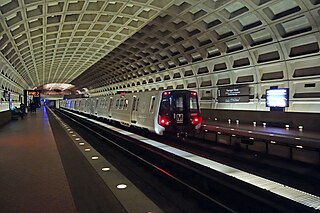
The Washington Metro, often abbreviated as the Metro and formally the Metrorail, is a rapid transit system serving the Washington metropolitan area of the United States. It is administered by the Washington Metropolitan Area Transit Authority (WMATA), which also operates the Metrobus service under the Metro name. Opened in 1976, the network now includes six lines, 98 stations, and 129 miles (208 km) of route.

A metro station or subway station is a train station for a rapid transit system, which as a whole is usually called a "metro" or "subway". A station provides a means for passengers to purchase tickets, board trains, and evacuate the system in the case of an emergency. In the United Kingdom, they are known as underground stations, most commonly used in reference to the London Underground.

The Tokyo Metro is a major rapid transit system in Tokyo, Japan, operated by the Tokyo Metro Co. With an average daily ridership of 6.52 million passengers, the Tokyo Metro is the larger of the two subway operators in the city; the other being the Toei Subway, with 2.85 million average daily rides.

The Mumbai Metro is a rapid transit system serving the city of Mumbai and the wider Mumbai Metropolitan Region in Maharashtra, India.
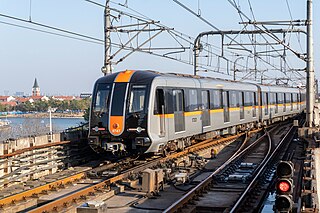
The Shanghai Metro (Chinese: 上海地铁; pinyin: Shànghǎi Dìtiě; Shanghainese: Zaon6he5 Di6thiq7) is a rapid transit system in Shanghai, operating urban and suburban transit services to 14 of its 16 municipal districts and to the neighboring township of Huaqiao, in Kunshan, Jiangsu Province.

The Los Angeles Metro Rail is an urban rail transit system serving Los Angeles County, California, United States, consisting of six lines: four light rail lines and two rapid transit lines, serving a total of 102 stations. The system connects with the Metro Busway bus rapid transit system, the Metrolink commuter rail system, as well as several Amtrak lines. Metro Rail is owned and operated by the Los Angeles County Metropolitan Transportation Authority (Metro).
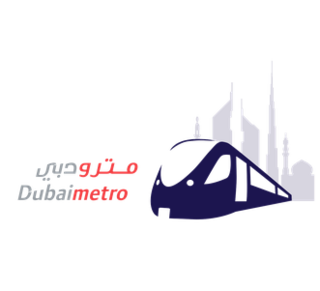
The Dubai Metro is a rapid transit system in the city of Dubai, United Arab Emirates. The metro system consists of a network of two main lines: the Red Line and the Green Line. A third line, the Blue Line, is scheduled to open in 2029.

The Kolkata Metro is a rapid transit system serving the city of Kolkata and the Kolkata Metropolitan Region in West Bengal, India. Opened in 1984, it was the first operational rapid transit system in India. Currently it is the second busiest and fifth longest rapid transit system in India. As of now, it has one fully operational, and three partly operational lines for a total of 59.38 km (36.90 mi). Two other lines are in various phases of construction and planning. The system has a mix of underground, at-grade, and elevated stations using both broad-gauge and standard-gauge tracks. It operates on a 750 V DC Third rail system. Trains operate between 06:50 and 22:40 IST and the fares range from ₹5 to ₹50.

Namma Metro, also known as Bengaluru Metro, is a rapid transit system serving the city of Bengaluru, the capital city of the state of Karnataka, India. It is the second-longest operational metro network in India with an operational length of 76.95 kilometers, just behind Delhi Metro. Upon its inauguration in 2011, it became the first underground metro system in South India. Namma Metro has a mix of underground, at grade, and elevated stations. Out of the 68 operational metro stations of Namma Metro as of November 2024, there are 59 elevated stations, eight underground stations and one at-grade station. The system runs on standard-gauge tracks.

The Yellow Line is a rapid transit metro line of the Delhi Metro in Delhi, India. It consists of 37 stations from Samaypur Badli in Delhi to Millennium City Centre in the neighbouring city of Gurgaon in Haryana. The 49.02 kilometers (30.46 mi) line is mostly underground and laid under one of the most congested parts of Delhi. The Yellow Line is the second line of Delhi Metro to become operational after the Red Line.
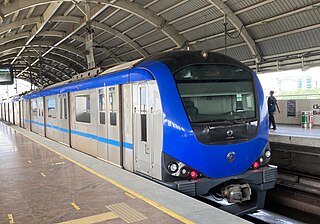
The Chennai Metro is a rapid transit system serving the city of Chennai, India. Operated by Chennai Metro Rail Limited (CMRL) – a joint venture between the Government of India and the State Government of Tamil Nadu, the network consists of two lines and spans 54.1 km (33.6 mi). The system uses standard gauge and has 41 underground and elevated stations.

The Hyderabad Metro is a rapid transit system, serving the city of Hyderabad, Telangana, India. It is the third longest operational metro network in India after Delhi Metro and Namma Metro (Bengaluru), and the lines are arranged in a secant model. It is funded by a public–private partnership (PPP), with the state government holding a minority equity stake. Hyderabad Metro is the world's largest elevated Metro Rail system based on DBFOT basis. A special purpose vehicle company, L&T Metro Rail Hyderabad Ltd (L&TMRHL), was established by the construction company Larsen & Toubro to develop the Hyderabad metro rail project.
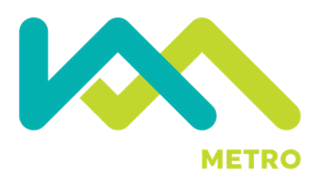
The Kochi Metro is a rapid transit system serving the city of Kochi and the wider Kochi Metropolitan Region in Kerala, India. It was opened to the public within four years of starting construction, making it one of the fastest completed metro projects in India. The Kochi metro project is the first metro system in the country which connects rail, road and water transport facilities. It is also the first metro rail system in India to be operated using the Communication-Based Train Control (CBTC) signalling system, which requires minimum human intervention. The Kochi Water Metro is integrated with the Kochi Metro, which also serves as a feeder service to the suburbs along the rivers where transport accessibility is limited.

Rapid transit or mass rapid transit (MRT) or heavy rail, commonly referred to as metro, is a type of high-capacity public transport that is generally built in urban areas. A grade separated rapid transit line below ground surface through a tunnel can be regionally called a subway, tube, metro or underground. They are sometimes grade-separated on elevated railways, in which case some are referred to as el trains – short for "elevated" – or skytrains. Rapid transit systems are usually electric railways, that unlike buses or trams operate on an exclusive right-of-way, which cannot be accessed by pedestrians or other vehicles.

The Delhi Metro is a rapid transit system that serves Delhi and the adjoining satellite cities of Ghaziabad, Faridabad, Gurugram, Noida, Bahadurgarh, and Ballabhgarh in the National Capital Region of India. The system consists of 10 colour-coded lines serving 257 stations, with a total length of 353 kilometres (219 mi). It is India's largest and busiest metro rail system and the second-oldest, after the Kolkata Metro. The metro has a mix of underground, at-grade, and elevated stations using broad-gauge and standard-gauge tracks. The metro makes over 4,300 trips daily.

The Magenta Line is a metro rail line of the Delhi Metro, a rapid transit system in Delhi, India and the first driverless metro in India. The line, which trundles across South Delhi and is majorly underground, spans 38.66 kilometers (24.02 mi) and consists of 26 metro stations: 10 are elevated and the rest are underground. Unlike the Airport Metro Express, this line directly serves Terminal 1 of the Indira Gandhi International Airport.


















